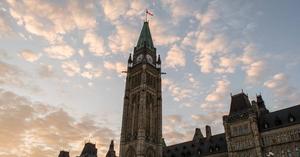Health experts at B.C.-based Lighthouse Dental Centre gathered data from government websites on a variety of factors including atmospheric emissions, access to health care, and rates of cancer, obesity and other conditions to come up with a score out of 100.
Topping the list with a score of 85 was Yukon territory, with the lowest TPM (total particulate matter) emissions in the country, just 0.15 tonnes per square kilometre. Also, the percentages for chronic conditions like diabetes, chronic obstructive pulmonary disease (COPD), and high blood pressure are relatively low, and 83 per cent of Yukon residents have a regular healthcare provider.
Ranking just below Yukon at 84.8 was Canada’s newest territory, Nunavut with emissions of 0.03 tonnes per square kilometre, and the lowest recorded rates for cancer and high blood pressure in the nation. It also boasted the country’s second-lowest percentage for perceived stress at 15.4 per cent. (Only Newfoundland and Labrador had a lower score.)
Down at the other end of the scale, were Nova Scotia and New Brunswick, with scores of 40 and 44.7, respectively. Nova Scotia had the nation’s highest cancer rate at 633.5 per 100,000 people, and also topped the list for COPD. New Brunswick also had high rates of cancer, diabetes and high blood pressure. Both provinces did score well when it came to having regular healthcare providers — 87 per cent for Nova Scotia and 90 per cent for New Brunswick.
Some other findings:
Alberta and Saskatchewan have notably high levels of TPM per square kilometre (close to 14 tonnes for each), indicating significant environmental stress in these regions.
Quebec has the highest percentage of perceived stress (22.7 per cent) and the nation’s second-highest cancer rates (667 per 100,000 people) while Nova Scotia reports the highest percentage of mood disorders.
Newfoundland and Labrador have the highest obesity rates at 40.9 per cent, while British Columbia has the lowest at 22.9 per cent. Quebec was a close second lowest, at 25.9 per cent. Most of the other regions scored in the mid-to-high 30s.
Access to healthcare showed a huge discrepancy. Ontario had the highest percentage of people with a regular healthcare provider at 90.6 per cent, while in Nunavut the number was just 23.6 per cent.
There was relatively little disparity in COPD (between four and seven per cent) or perceived stress (13 to 23 per cent). Similarly, heavy drinking numbers mostly fell between 16 per cent (Ontario) and 21 per cent (Yukon), with the single outlier being the Northwest Territories, at 28 per cent.

Link: https://nationalpost.com/news/list-of-healthiest-provinces-in-canada?fbclid=IwAR1XoE-Lk8vsqQeL9kl_8w2Roc11nacA2MpmbTcuRhf3KE7W9cibDiC_58I





